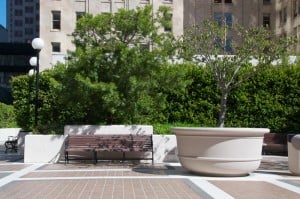5 Mistakes to Avoid with Commercial Landscaping
Commercial landscaping can bring big benefits to your business; everyone enjoys an aesthetically pleasing site. Adding some greenery to your commercial property can boost revenues and even improve employee work ethic. Still, a well-intentioned landscaping project can quickly turn into an expensive nightmare without proper guidance. Create commercial landscaping that proves beneficial by avoiding these 5 costly commercial landscape mistakes.
1. Not Having a Before and After Plan
Many landscaping projects begin, stop, and then begin again. In this instance a project can start to feel disorganized and even become inefficient. The best landscaping is thoroughly thought out and planned before being embarked upon, you don’t want to change your mind or realize a lightly thought out idea won’t actually work mid-way through construction. Having a plan of action to maintain landscaping is just as important as your detailed design plan. Plants and flowers require very specific upkeep or else they rapidly turn into wilting eyesores. Create a plan to develop and sustain your commercial landscaping in order to save money and reduce hassles in the future.
2. Not Giving Plants Enough Room to Grow
A common landscaping error is not foreseeing how large plants will grow and then ending up with a garden of awkwardly cramped plants. When your landscape is first completed it will look beautiful but don’t expect it to look full, plants must adjust to their environment, soaking in rain, sun, and oxygen before growing into their full potential. With time your landscaping will become more bountiful and nice to look at, so give your plants plenty of space to spread their petals. Find Out More.
3. Calling All Pests To Your Place of Business

In order for plants to grow they will need mulch, but mulch is sparse with pests that like to borrow inside and call it home. If mulch is touching the outside
walls of a building it leaves the perfect opportunity for pests, like termites and ticks, to get inside. To avoid a bill from the pest control company, keep mulch away from any buildings or wood structures, and look into contained planters, which will keep mulch from spreading into unwanted areas. Deer are much too cute to call a pest, but when they start eating your landscaping you might think otherwise. To avoid feuds with the local wild animals, don’t plant something they are highly attracted to. For instance, if you have a lot of deer in your area you will want to plant something deer do not actively seek out for food, such as American holly or fountain grass. On the other hand, deer love to eat cherry plants and evergreen azaleas. By conducting a little research you can avoid being staked out as the new place to chow down for local natural wildlife.
4. Forgetting Water & Drainage Systems
Once your landscape is complete you must ensure every plant receives enough water. Considering 50% of residential water usage is directly related to landscaping, you can imagine how much water plants really need. Having a proper sprinkler system installed can help big time. Although, with a watering system comes a need for a drainage system; badly designed or nonexistent drainage systems will lead to big problems. Including (but not limited to):
- Puddles of water forming where you least want them, perhaps even causing customers to soak their shoes.
- When water is allowed to build up over time, fungus and other bacteria are able to thrive, potentially harming the beauty of your landscape.
- Flooded walkways can lead to the development of algae or moss build up, which won’t look good, and can also lead to cracks and rotting of certain surfaces, such as a wood deck.
5. Failing to Realize Good Landscaping is An Art Form
Have you ever looked at someone’s landscaping and thought, something isn’t right—it just doesn’t look as good as it could. Most likely what that lack-luster landscape needs are some borders, boundaries and new dimension. Instead of planting all flowers and ground coverings side-by-side, plants need to be separated in order to stand out. Container planters are one way to add unique design to any landscape, acting also as a scenic barrier between different sections of landscaping. You can also install a few rows of brick trim to keep woodchips from quickly mixing in with nearby grass. Landscaping is just like art, without borders all of the colors mix together, creating an unprofessional picture. 12 More Common Landscaping Mistakes

